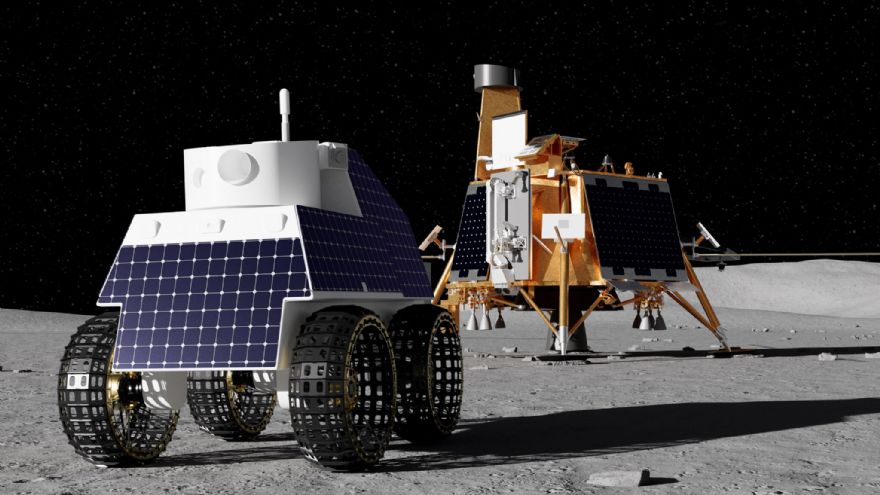
US-based
Firefly Aerospace has contracted
Honeybee Robotics, a
Blue Origin company, to provide the lunar rover to explore the Gruithuisen Domes on the Moon’s near side in 2028. Once deployed by Firefly’s Blue Ghost lander, Honeybee’s rover will carry
NASA instruments to investigate the unique composition of the Gruithuisen Domes – a part of the Moon that has never been explored.
Paul Ebertz, Blue Origin’s senior vice president (in-space systems), said: “We are excited to support Firefly’s mission to the Gruithuisen Domes by providing surface mobility, a key capability for lunar permanence. With this rover, Honeybee Robotics builds on its legacy of advanced robotics and hardware designed for exploration throughout our solar system.”
During mission operations, Firefly’s Elytra Dark transfer vehicle will first deploy the Blue Ghost lander into lunar orbit and then remain on orbit to provide long-haul communications. Blue Ghost will then land in the Gruithuisen Domes, deploy the Honeybee Robotics rover, and support payload operations for approximately 14 days on the lunar surface.
Shea Ferring, chief technology officer at Firefly Aerospace, said: “Firefly is proud to partner with Honeybee Robotics to help us explore the challenging Gruithuisen Domes terrain on our third mission to the Moon. The Firefly team has worked closely with Honeybee on two payloads – the Lunar PlanetVac and LISTER subsurface drill – that were successfully operated on our first Blue Ghost mission to the Moon. Its stellar team, robust rover solution, and flight proven technologies made Honeybee the obvious choice.”
Gruithuisen Gamma DomeHoneybee’s rover will be deployed to help investigate the subsurface composition of the Gruithuisen Gamma Dome and will carry elements of NASA’s Lunar Vulkan Imaging and Spectroscopy Explorer (Lunar-VISE) suite. Lunar-VISE has multiple instruments, including two cameras attached to Firefly’s Blue Ghost lander that will characterise the landing site and rover traverse as well as an infra-red multi-spectral camera system and a spectrometer attached to Honeybee’s rover that will measure gamma ray and neutron emissions.
The rover will travel along the southern edge of the Gruithuisen Gamma Dome and through a boulder field to reach the rim of a recent impact crater. The rover will then traverse back to the lander just before sunset to enable repeat observations of boulder targets at different solar illumination angles.
In total, there will be six NASA-sponsored payloads on board Firefly’s Blue Ghost Mission 3 that aim to uncover the composition and fundamental volcanic processes that formed the domes, in addition to other science investigations and technology demonstrations. This mission will follow Firefly’s first mission to the Moon that successfully landed in Mare Crisium and completed 14 days of surface operations earlier this month. Firefly’s second lunar mission is set to launch in 2026 with operations in lunar orbit and on the far side of the Moon.